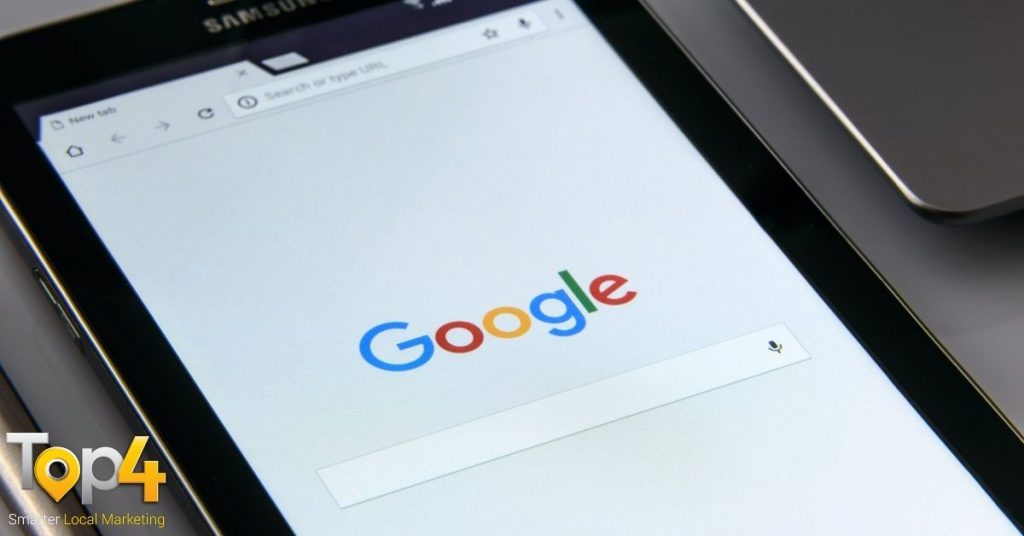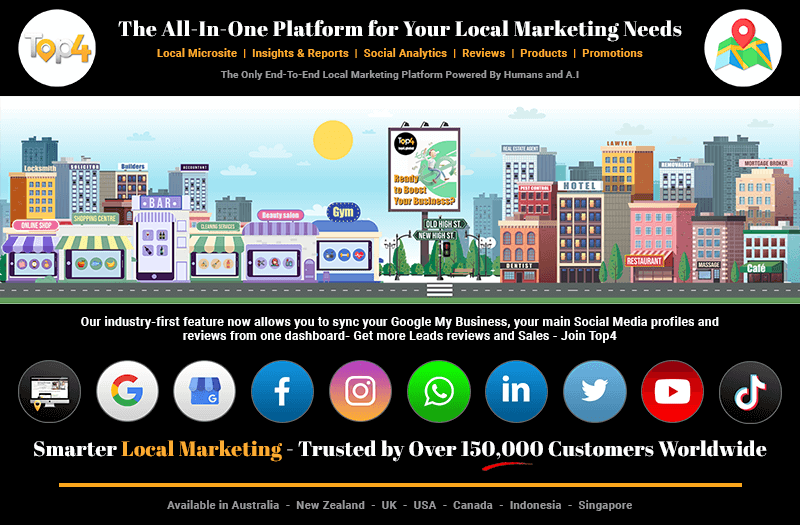The page you send customers to after clicking your ad, commonly referred to as a landing page, can have a huge impact on your advertising effectiveness and budget. By following a few landing page best practices, you can work to improve your Ad Quality Score, which typically leads to more cost-effective results.
What is Google Ads?
Google Ads, formerly known as Google AdWords, is an advertising service by Google that allows businesses to display ads on Google search results and its advertising network.
Send the user to a tailored landing page, rather than a homepage, so they don’t have to click around to find the content they are looking for.
Read on to learn about how you can optimise your landing pages:
1. Why is landing page optimisation important?

If you find that your customers aren’t moving past the first page, then it’s time to re-evaluate your landing page. Your landing page experience refers to the quality of the experience that a customer has while they are on your website. The easier it is for customers to find their way to the shopping basket, the more likely they’ll complete a purchase.
In addition, your landing page experience also affects ad rank position, Quality Score and overall cost. So if your landing page is causing users to consistently leave without making a purchase, this may cause your ads to show less often, or not show up at all.
Here’s how your landing page optimisations can affect ad performance and overall budget:
Decreased Bounce Rate
The better tailored that your landing page is to a specific audience, the less likely they will be to click away or bounce immediately. If you drive traffic to a highly targeted landing page instead of a generic one, this is likely to maximise your conversions, and reduce your Cost Per Click (CPC).
Improved Ad Position
Google notices when people find your landing page more relevant than others. The more useful information and the better experience your website provides, the more likely your ad will show in a higher position.
Improved Quality Score
Landing page relevance plays a large part in how Google Ads calculates your Quality Score. The more relevant your landing page is to your chosen keywords, the higher your Quality Score will be. When you improve your Quality Score, this helps your ads rank higher, and results in you paying less per click.
Increased Links & Authority
When you feature relevant and interesting content on your landing page, your site visitors are more likely to share your page with others. This results in greater brand exposure for you, at zero cost.
Take advantage of the data that Google provides and start testing and adopting the following landing page best practices.
What is Google Ads Quality Score?
This is a score that Google Ads provides as an indicator of how healthy an ad and keyword selection is. Your Quality Score also helps in determining the position of your ad.
2. Landing page optimisation best practices

At Top4 Marketing, we’re focused on delivering users the best possible results. Customers want a landing page that is:
- Relevant – The website that visitors click into should be useful and applicable to what they’re looking for. If not, they’re more likely to leave the said website for a more relevant one.
- Trustworthy – If a landing page is poorly designed or lacks product or service explanations, this sends a signal to users that the brand or website may not be completely honest or credible.
- Easy – Users shouldn’t have to click through a million links to find what they’re looking for. A landing page should be simple and straightforward–this includes the mobile experience on devices.
- Reliable – A landing page should be consistent and accessible, no matter the platform. If there are any issues such as a slow page load time, this may cause visitors to leave the site prematurely.
Make the landing page relevant
Send users to a relevant landing page.
Instead of sending users to a generic home page, direct them to a tailored home page so that they don’t have to click around to find the content that they’re looking for. Not only does this prevent customers from dropping off before they find what they’re looking for, but it also signals to Google that the page is the best choice for users.
Match the keywords on your ads to your landing page.
Use the same keywords across your ads and landing pages. This ensures that your content is relevant, and provides a unified experience to your site visitors.
Match the call to action on your ads to your landing page.
Your call to action is a prompt that encourages your users to take a specific action. Popular calls to action include “Buy”, “Act now” and “Sign up”. Use the same call to action on your ads and landing page to reinforce your message.

Ensure that every element on your page supports your ultimate goal.
As an example, if your goal is to sell black dresses on your website, then your landing page should not suggest that users also view men’s shoes or baby clothes. Stay focused on your goal to keep users engaged and on the path to conversion.
Use the same value proposition on your landing page.
This also ties into the trustworthiness of your website. If you’re offering free delivery in your ad, then your landing page should also highlight free delivery.
Make sure that your call to action and value proposition stand out.
In terms of design, allow for a little extra white space around your call to action and value proposition. This allows them to stand out more, and command your visitors’ attention.
Show off your unique features.
Be clear about what your product is, and why customers should purchase your product from you instead of your competitors. Don’t use the same copy that you’ve already used on another landing page.
Gear your language toward your audience.
Ensure that the tone of your landing page copy resonates with your audience. For example, if you’re selling yoga clothes or mats, utilise a tone that’s peaceful and mellow.
Use ad groups to narrow your focus.
Group ads for similar offers or products in the same ad group. Using ad groups, you can organise your campaigns more effectively, and make sure your ads are relevant to the keywords that consumers are searching for.
What is Ad Conversion?
An Ad Conversion occurs when a customer clicks on or interacts with your ad, then takes an action that you’ve defined as valuable to your business, such as an online purchase, a newsletter sign-up, or a phone call.
Make the landing page trustworthy

Be upfront about what you’re offering, additional fees and all.
Your landing page is the first impression that a customer has of your business. It’s important that you come across as honest and transparent by providing clear and comprehensive information upfront, even when it comes to factors that may potentially drive customers away, such as additional fees.
Include your contact information and make it easy to find.
It’s important that if your customers have a problem, they know how to contact you for help. This shows that your business is willing to communicate and offer customer support.
Make sure that your copy is grammatically correct.
Spelling errors and unnatural language are the first signs that a page might be a scam. Ensure that your copy flows naturally and is error free.
If asking for customer information, be clear about why.
If you’re asking customers to fill in forms to provide additional information or to submit an email address before entering your page, clarify why you need this information. Users are naturally hesitant about offering personal information, so tell them why it’s necessary beforehand to build trust.
Prominently display customer reviews or testimonials.
Showcasing product reviews or customer testimonials helps you build trust. Do not alter or delete reviews to paint your brand in a more positive light.
Provide a safety net.
Not all customers are ready to purchase as soon as they click your ad. Provide a secondary call to action at the bottom of your page that may offer more information, but doesn’t necessarily require a firm commitment. This builds confidence and keeps users on your website.
Don’t use pop-ups.
When users click on your ad, they expect to be taken directly to your landing page. Pop-ups may annoy or scare away potential customers by asking for too much information, too early on.
Verify any facts or claims and don’t exaggerate.
If you state that you offer “24-hour shipping” or the “largest selection of sneakers online” on your website, make sure you can deliver. Don’t exaggerate and mislead your customers; this may lead to negative reviews.
Provide a link to your terms and conditions or privacy statement.
This helps to quell fears of email abuse or false promises and adds transparency to your business objectives. These links don’t need to be prominent, however, they should be easily accessible to all customers.
Display any certifications or brand associations prominently.
If your company has any specialty certifications, awards or reputable affiliations, display these clearly on your landing page. This helps to improve the credibility of your website and makes customers feel more comfortable making a purchase or releasing personal information.
Use a clean and concise design.
Make sure that your layout is simple, clear and not distracting. A professional design indicates that your business is legitimate and investing in its own success.
What is an Ad Group?
An ad group contains one or more ads that target a shared set of keywords and can be used to optimise your paid media marketing campaign.
Make the landing page easy to navigate

Make your landing page easy to navigate.
The number one rule for landing page best practices is giving customers what they want. Make sure that it’s easy for your customers to navigate their options.
Use lists or bullet points.
Lists and bullet points help to organise your content and make it easier to digest. This provides a better experience for your website visitors, especially those who are on their mobile devices.
Get straight to the point.
Skip the long, complex introductions. Get to the point and give your customers the information that they’re looking for immediately.
Make your call to action buttons sufficiently large.
If your call to action buttons are too small, your visitors won’t be able to spot them. Consider enlarging your buttons so that they’re more visible and eye-catching.
Make your page and/or content easily shareable.
Your landing page should have social media buttons displayed at the top, and all images or videos should also be easily shareable.
Make the landing page reliable
Make your landing page load as quickly as possible.
Your page load time plays a big role in ensuring a good user experience. If a page takes too long to load, users will often get frustrated and leave the page, indicating to Google that your page isn’t the best option. Use PageSpeed Insights to determine whether your page is up to par.
Provide a consistent experience.
You should provide the same brand experience to all your customers, regardless of whether they’re browsing your website on a tablet, desktop or mobile device. To do this, either create a mobile optimised landing page to use with your mobile ads or design your site to be mobile-responsive.
Avoid too much Flash or JavaScript.
Certain features like flashing ads or pop-ups are often hard for our crawlers to read and may make the Google Ads system think that your page doesn’t offer relevant content. These can also slow down page load time.

Keep your landing page consistent with your brand.
Users expect a seamless experience. If your landing page isn’t consistent with your brand, consumers may question whether your business is legitimate.
Optimise any images used.
The number of images you use affects your page load time. Ensure that images on your landing page are relevant and that they aren’t too large.
Use natural-sounding copy that is welcoming and encouraging.
Your landing page is the equivalent of a face-to-face salesperson. Utilise a welcoming tone to build rapport with your customers.
Summary
Make it an ongoing effort to optimise the landing pages that you utilise in your ad campaigns so that you can provide your visitors with a better experience. When you work to minimise your bounce rate and improve your quality score, this helps you to boost conversions.
Grow your revenue from online advertising with the perfect Google partner! You can rely on the paid search experts at Top4 Marketing to manage all aspects of your Google Adwords (Google Ads) campaign, from fine-tuning your existing campaign or starting from scratch. If you’re not seeing the results that you want in Google Ads or need a fresh perspective on where to direct ads next, get in touch with us for a complimentary analysis today!
To find out how we can help you with your Website + Marketing, using our unique location marketing platform called Top4, get in touch today at www.top4marketing.com

Looking to build customer loyalty through social media? Don’t forget to add your business to Top4.global
List your business, create your own digital store to sell goods and services, and share posts on social media. Promote your business on Google instantly! Should you need help with local digital marketing then view our new Google Marketing Platform and services Top4 Marketing
Get Found On Google Promote Your Website, Reach local customers today!
Our Digital Marketing Agency Services Across All Industries Include Search Engine Optimisation (SEO), Google Marketing, Website Design, Corporate Web Development, and local location-based marketing using our own Google Marketing Platform!
Engage A Social Media Agency For Only 1/3 The Cost Of Employing A Social Media Manager…LET’S TALK!




